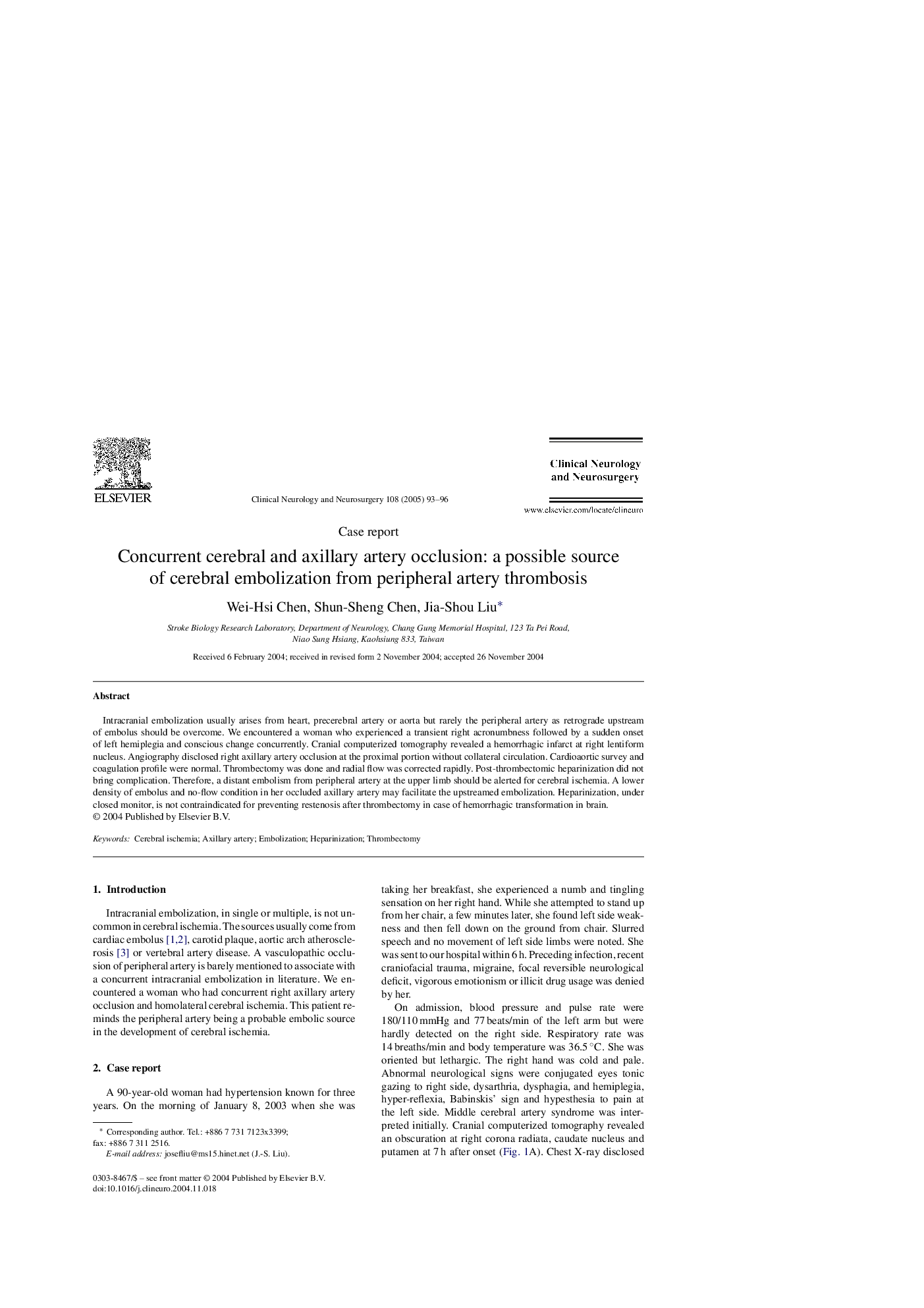| Article ID | Journal | Published Year | Pages | File Type |
|---|---|---|---|---|
| 9188199 | Clinical Neurology and Neurosurgery | 2005 | 4 Pages |
Abstract
Intracranial embolization usually arises from heart, precerebral artery or aorta but rarely the peripheral artery as retrograde upstream of embolus should be overcome. We encountered a woman who experienced a transient right acronumbness followed by a sudden onset of left hemiplegia and conscious change concurrently. Cranial computerized tomography revealed a hemorrhagic infarct at right lentiform nucleus. Angiography disclosed right axillary artery occlusion at the proximal portion without collateral circulation. Cardioaortic survey and coagulation profile were normal. Thrombectomy was done and radial flow was corrected rapidly. Post-thrombectomic heparinization did not bring complication. Therefore, a distant embolism from peripheral artery at the upper limb should be alerted for cerebral ischemia. A lower density of embolus and no-flow condition in her occluded axillary artery may facilitate the upstreamed embolization. Heparinization, under closed monitor, is not contraindicated for preventing restenosis after thrombectomy in case of hemorrhagic transformation in brain.
Related Topics
Life Sciences
Neuroscience
Neurology
Authors
Wei-Hsi Chen, Shun-Sheng Chen, Jia-Shou Liu,
